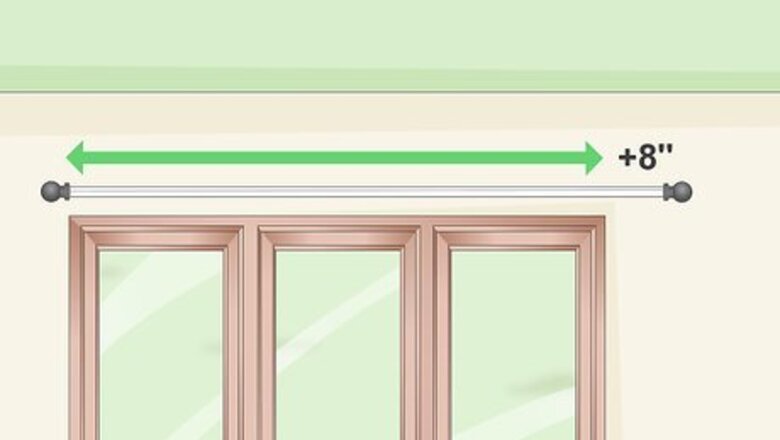
views
- Measure the length and width of your window to pick the perfect curtains.
- Drill the brackets for the curtain rod into your wall, and use wall anchors if you can't find a stud.
- Slide your curtain onto the curtain rod, then balance the curtain rod on your brackets.
- Hem your curtains if they are too long.
Measuring Your Window

Calculate the length of your window. Ideally, your rod should be several inches (or centimeters) wider than your window to give your curtain panels enough space. Before you've purchased a curtain rod, use a measuring tape and write down your window's length. Longer curtain rods make the window look larger than it is. As a rule of thumb: choose a curtain rod 8–12 inches (20–30 cm) wider than your window.
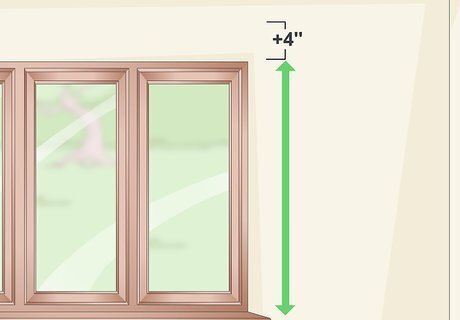
Determine your window's height. Placing your curtain rod directly above your window will make your window appear narrow and cramped. Instead, mark a spot above your window, about halfway between the top of the window and the ceiling. This will make your windows and ceiling appear spacious.
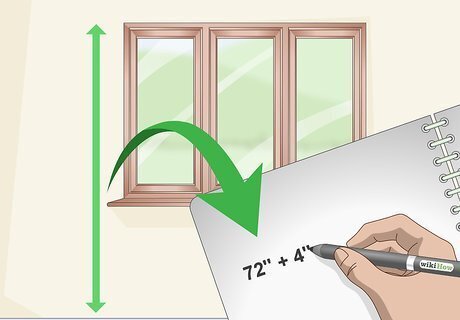
Measure the height of your floor to the top of your window frame. Curtains that are too short to reach the floor look awkward. Your curtains should touch the floor or even pool slightly on the bottom. Write down your measurement, then add several inches/centimeters depending on how high you hang your rod. Avoid letting more than 1–2 inches (2.5–5.1 cm) of curtain pool on the floor.
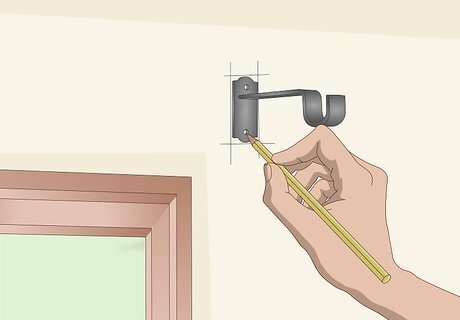
Mark your intended bracket locations. Use your measurements to determine the right length or height of your brackets. Write with a pencil in case you need to adjust your markings. Hold your brackets up to the wall as you make the pencil marks to accurately determine where screws will go. In most cases, the right brackets and screws will come with your curtain rod.
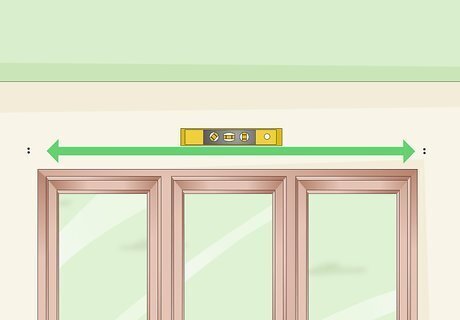
Make sure your measurements are level. Crooked curtains can ruin the overall look of a room. Use a level and measuring tape to make sure your marked lines are straight. Continue adjusting the marks until your line is even. If the bubble floats in between the two marked lines on your level, your area is straight. Straight edges combine levels with measuring tape and can make a useful alternative.
Installing a Curtain Rod

Drill holes into the marked areas. Screwing in your brackets without pre-drilling holes will make your wall at-risk for hairline fractures. Use a drill to make small holes, as holes too large for the screw can leave your rods loose. You can make the hole larger later if the screws do not fit into the hole. Base the hole size on the size of your screws. Each hole should be identical in size to the screw's body.
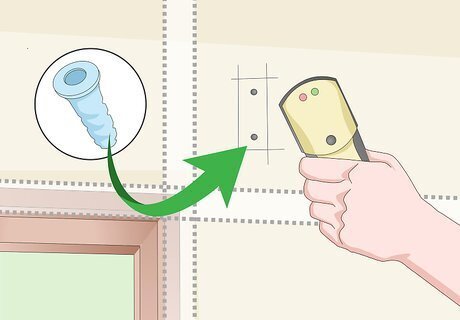
Use a stud finder to determine how many wall anchors you'll need. If you have wall studs installed next to the drilled areas, you will not need to install wall anchors. Instead, you'll be able to directly screw in your curtain brackets. Mark the holes next to wall studs, and purchase any additional anchors as needed. To use a stud finder, run the device along the wall and watch the screen to see if a stud has been detected.
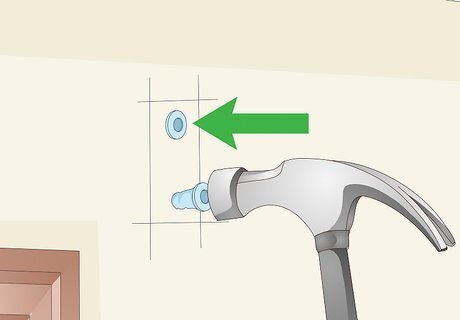
Install wall anchors. Mark the intended hanging points for your wall anchors with a pencil. Use a drill to make holes in the wall for any needed anchors. Place the anchor through the hole and tap it in with a hammer until it is secure. Install one anchor per bracket screw. The holes drilled for the wall anchors should be separate from the holes drilled for the screws earlier. Avoid making the hole wider than the anchor. The hole should be about the same length as the anchor's attachment areas to avoid loose wall anchors.
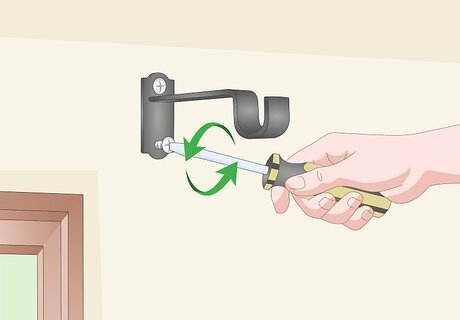
Screw in the brackets. After your wall anchors are secure, place the brackets up against the wall and place your screws into the pre-drilled holes. The wall anchor will keep the screws supported while they bear the rod's weight. Use a stepladder to make sure you are level with the wall so the screws aren't installed at an angle.
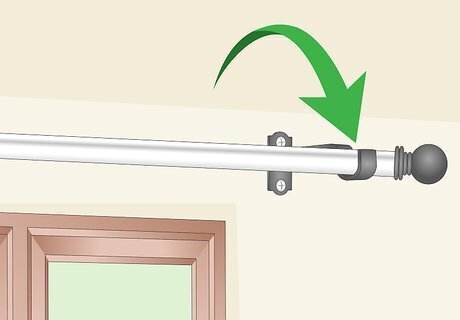
Make sure the brackets can support the rod. After the brackets have been installed, hang the rod overhead (or screw your rod into the bracket) to make sure your brackets can handle the curtain rod's weight. If not, you may need to reinstall heavy-duty brackets (which can be purchased at specialty hardware stores). If the brackets seem loose or if they seem to move slightly under the rod's weight, they are probably not strong enough to support the curtain rod.
Adding Your Curtains
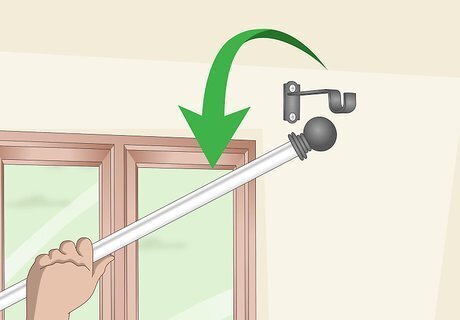
Remove your rod to hang the curtains. Once you're certain that your brackets can hold your rod, remove it to attach your curtains. Most rods have stops at the end to prevent the curtains from falling off. Screw off one stop so you can slide on the curtains and secure them to the rod.
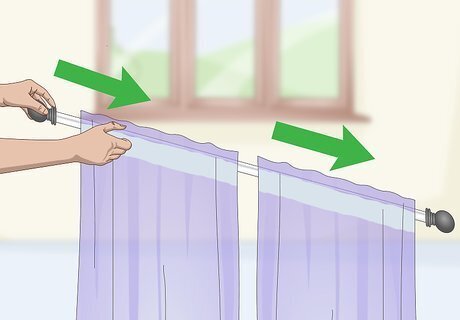
Add the curtains onto the rod. Some curtains are attached to the rod by curtain rings while others are threaded directly through the rod. Consult the instruction manual your curtains came with if you're unsure. After you've attached the curtains, screw the stop back onto the end of your rod.
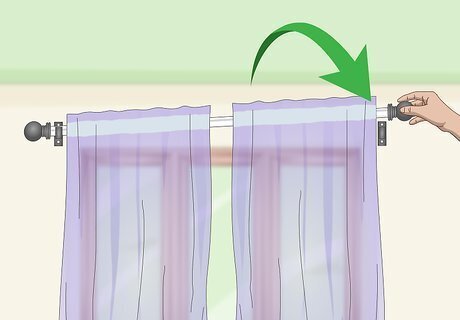
Put the rod back into place. Hang your curtain rod back onto the brackets to assess how your curtains look. If your measurements were correct and the brackets installed at a level angle, your curtains should enhance the look of your window. If your curtains are too heavy for the brackets, you may need heavy-duty brackets or a rod with added support.

Hem your curtains if they remain too long. Take your curtains to a local seamstress or hem the fabric yourself. Cut your fabric slightly longer than your desired length, then pin your fabric up with needles. Use a sewing machine to hem the curtain in a straight, even line. Make your hem 1 inch (2.5 cm) longer than you expect you'll need to avoid shortening your curtains too much.
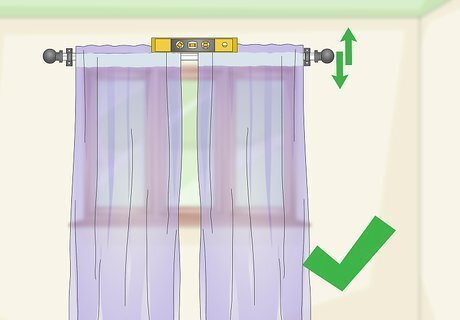
Check your curtains for crookedness. If the curtain rods are uneven, your curtains may appear crooked or uneven. Measure your curtain rod with a level again and re-adjust the brackets as needed until the rods are straight.



















Comments
0 comment